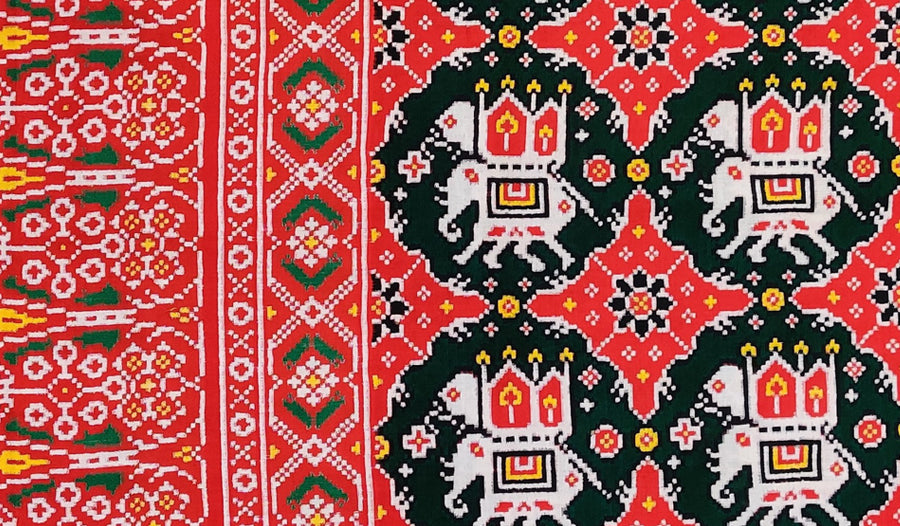
Patola Weaving of Patan, Gujurat
This guest post was written by Siddhi Dalal.

‘Chelaji re Mahra Hatu,
Patan thi Patola Monga lavjo’
These lyrics are from a popular Gujarati song where a woman beseeches her beloved husband to buy her a ‘Patolu’ saree from Patan.
Known as the King of textiles, the double 'ikat' of Patan is so finely woven that each side is indistinguishable from the other. These textiles were used in Western India for auspicious events by wealthy communities—as a symbol of prosperity and good luck. The Patola was also believed to have protective powers and was worn by expecting mothers for a ritual during their seventh month of pregnancy.

The process of weaving a Patola involves complex mathematics, with the design first being visualised in the weaver’s mind, then plotted on a graph paper, after which pre-determined sections of warp and weft are tied with cotton threads. The measurements for tying can be as minute as 1/100th of an inch and require great precision.
A form of resist-dyeing, the untied sections of cloth that have fully absorbed the dye are often tied again for dyeing in another colour. While weaving, the tie-dye patterns on the warp and weft intermesh precisely to create a solid design. The painstaking procedure of drafting, tying, dyeing and weaving takes around a year to complete.

Traditionally, patolas were dyed using natural dyes like indigo, pomegranate skin, turmeric, marigold and henna, in conventional designs like Nari Kunjar Bhat (women and elephant patterns), Paan Bhat (peepal leaf), Fulvali Bhat (floral motif) and Rattanchowk (geometric design).
Due to the laborious technique and complex mathematical calculations this textile is regrettably becoming a craft of the past. However, the Salvi family from Patan, one of the 3 families out of the original 700 continue to remain guardians of this royal art and shall do so for the coming decades.
Written by Siddhi Dalal.

1 comment
Lovely piece!